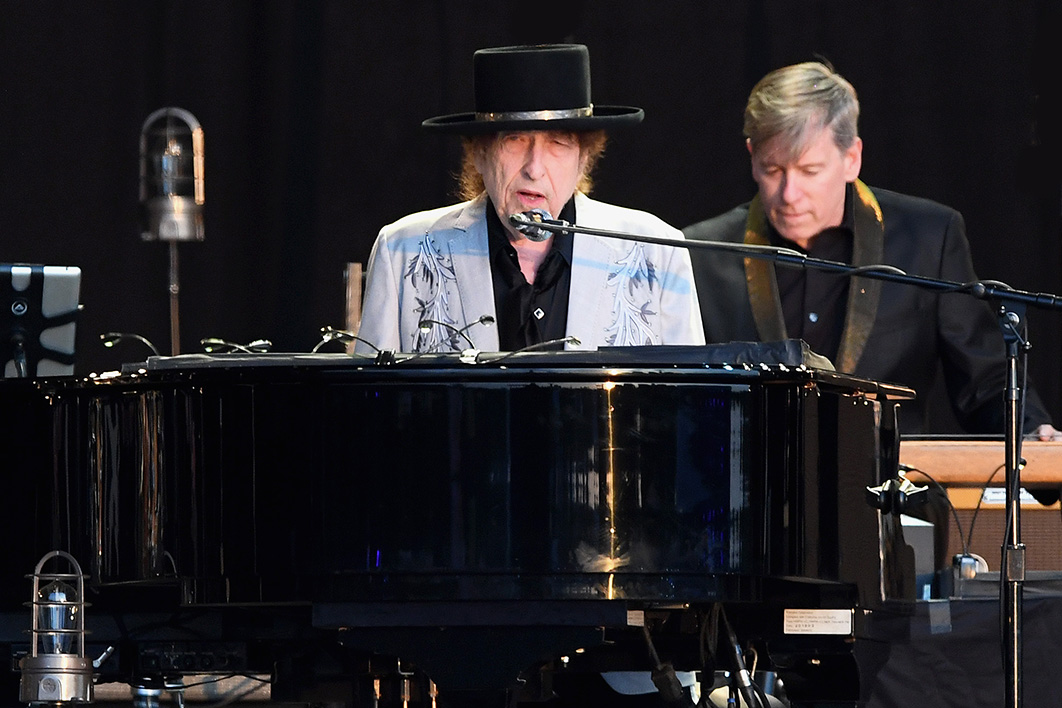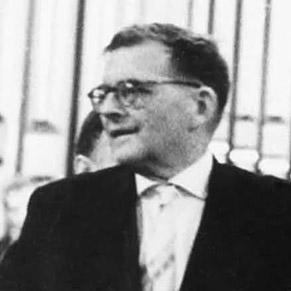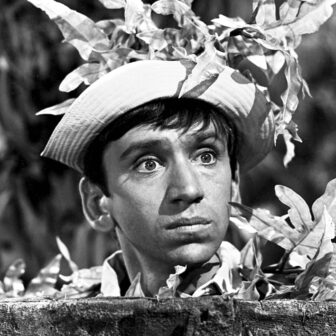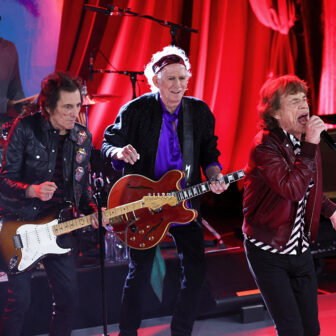“It’s not dark yet, / But it’s getting there,” sang Bob Dylan on his 1997 album Time Out of Mind. Whether he intended that refrain as a nod to encroaching old age (he was only fifty-six) or something like Armageddon, there can be little doubt that Dylan’s new album, Rough and Rowdy Ways, moves us closer to the dark. There’s much talk of death, and in “My Own Version of You” we’re invited to meet the singer “at the Black Horse Tavern on Armageddon Street.”
Rough and Rowdy Ways is Dylan’s thirty-ninth studio album, released one month after his seventy-ninth birthday. It is his first collection of new material since Tempest (2012), and also his first since being awarded the Nobel Prize in literature four years ago. That may be significant. In 2016, in response to the umbrage of those who believed song lyrics were not literature, the new laureate’s apologists spoke of Homer, of the anonymous poets of Beowulf and Sir Gawain the Green Knight, of Chaucer and Burns and Thomas Moore: all writers who expected their words to be performed. Dylan, we were assured, was a bard.
And so he was, and so he is. For anyone still in doubt, “Murder Most Foul,” the first track to be released from the new album, puts the matter to rest. It’s more than seventeen minutes long — his longest ever — and took the singer to the top of the Billboard charts for the first time in his career. But is it even a song? Dylan’s voice sits on a cushion of C major, the first of only three chords. Indeed there’s so much tonic C that the accompaniment occasionally reminds one of the drone-embellishing tanpura in Indian classical music. The melodic line, such as it is, consists of Cs with occasional flicks of E, and as the track continues, more and more Ds. But that’s it. It’s musical monotony, Dylan a chanter, an intoner, more than a singer. Yet it’s hardly dull. The longer it goes on, the more compelling “Murder Most Foul” seems.
As probably everyone knows by now, its starting point is the Kennedy assassination. This is how it begins:
’Twas a dark day in Dallas — November ’63
The day that will live on in infamy
President Kennedy was riding high
A good day to be living and a good day to die.
Four lines of pure doggerel to launch this epic. “’Twas,” indeed! But that’s the thing about Dylan’s poetry. To understand it, to apprehend its nuances, to appreciate the brilliance in the bathos, you must hear it sung/spoken by its author. There’s a wryness to the delivery of this song; with Dylan, there’s always wryness. The most serious of his songs are undercut with dark humour, because he refuses to take himself too seriously. On “Murder Most Foul,” Dylan knows exactly what he’s doing with that nod to the ballad tradition (“The day that will live on in infamy”). It was ever thus: “Come gather round people.” Casual listeners think of Dylan’s songs as confessional, but they hardly ever are. He’s a wearer of masks, more Randy Newman than Joni Mitchell.
It’s fifty-nine years since Dylan recorded his first album, and the new one contains plenty of echoes of his earlier work. We can hear them in the band, in the singing and in the songs themselves. Add Al Kooper’s organ to the musicians playing on the bluesier numbers and little seems to have changed since Highway 61 Revisited. The blues has been more central to Dylan’s art than even the Anglo and Celtic song traditions that came down to him through Appalachian singers such as Clarence Ashley and Dock Boggs.
On the new album, “Crossing the Rubicon” is a slow, twelve-bar blues, “Goodbye Jimmy Reed,” a hard-driving, electric blues with echoes of earlier songs such as “From a Buick 6” and “Leopard-Skin Pill-Box Hat.” Moreover, Dylan’s tribute to Reed, the late Chicago bluesman, is in keeping with such songs as “Blind Willie McTell” and “High Water (for Charley Patton).” The album’s title comes from a 1930s record, “My Rough and Rowdy Ways” by yodelling country singer Jimmie Rodgers. And there are familiar lyric tropes and images: the police procedural tone of “Murder Most Foul” is reminiscent of that of “Hurricane” on Desire; the “Black Rider” might be “The Man in the Long Black Coat”; and “Armageddon Street” is surely in the same part of town as “Desolation Row.”
The album begins by presenting us with its key. “I Contain Multitudes” is a gentle song that takes its title from Walt Whitman’s “Song of Myself.” Like much of Whitman’s poetry, this album will be full of lists, mostly names. The name-checking begins at once with references to Edgar Allan Poe’s “Tell-Tale Heart” and William Blake’s “Songs of Experience,” Beethoven’s sonatas and Chopin’s preludes. “I’m just like Anne Frank, like Indiana Jones / And them British bad boys the Rolling Stones,” Dylan sings: it’s a rollcall of “contradictions” and “moods”; like Tennyson’s Ulysses, Dylan is a part of all that he has met.
“False Prophet” is a bluesy–rocky number in which the singer announces, “I’m first among equals — second to none / I’m last of the best — you can bury the rest.” The voice tells us he’s joking. On “My Own Version of You,” we find him prowling morgues and monasteries searching for body parts (“Limbs and livers and brains and hearts”) in order to build some sort of model human, part lover, part commando: “If I do it upright and put the head on straight / I’ll be saved by the creature that I create.” So, a better outcome than for that other modern Prometheus. The song is a quick waltz, but with suspenseful chords creeping chromatically in the manner of some 1950s film noir or 1960s American TV cop show. In fact, they are the chords that underpin the opening of the James Bond theme.
“I’ve Made Up My Mind to Give Myself to You” comes next. Is that “you” the fabricated creature we’ve just been told about? Is this slow waltz the counterpart of the fast one we’ve just heard? You listen harder and realise it’s not a waltz at all, but a barcarolle, with six beats to the bar, not three. And it’s not just any old barcarolle, it contains phrases repeated over and over, from the most famous barcarolle of them all, the one Offenbach composed for The Tales of Hoffmann, in which Hoffmann falls in love with a courtesan, having earlier loved a mechanical doll.
Then comes “Black Rider,” another triple-time song, slower still. Who is the rider? Is he Samiel, the satanic Black Huntsman of Wolf’s Glen in Der Freischütz? Is he death itself? Whoever he is, we feel a new chill as the album takes a darker turn yet.
Between the two blues numbers comes a hymn, “Mother of Muses” — a companion piece to “Mr Tambourine Man,” and with a gentle, felicitous melody, just like its precursor, though the elderly Dylan’s voice can’t do much more than sketch its outline. It’s late now for “skipping reels of rhyme”; the best the singer can hope for is that this “Mother of Muses” will grant him some eloquence as he finds himself “falling in love with Calliope,” the muse of epic poetry.
The final track on the first disc, “Key West (Philosopher Pirate),” is arguably the most enigmatic in a very tight field. It is also perhaps the most sheerly beautiful song on the album. It’s a reminiscence, a love song, a coming to terms with faith and with mortality, an attempt to make sense of things. Key West, after all, was where the poet Wallace Stevens situated his “Idea of Order,” his song of praise to the revelation that comes from artistic enquiry and invention.
I hadn’t intended to write about this album at all, and now I see my monthly column is going to be roughly twice the length it’s supposed to be. But this dark, dark album has taken over my thinking for the past two weeks. There is so much in it that can’t easily be explained, let alone reduced to an article — even one that has overshot its word limit.
The Bible is everywhere, and multiple myths and histories. The Trojan wars and the first Crusade are mentioned; “Mother of Muses” contains the names of generals from the American civil war and the second world war; another military leader, Julius Caesar, makes two appearances. And then there are the presidents, not just Kennedy but, in “Key West (Philosopher Pirate),” Harry Truman, who had a second White House on Mallory Square in Key West, and William McKinley, president from 1897 until his assassination in 1901. Of course, the spectre of modern American politics also hangs over this record, and that’s about as dark as you can get.
More than any other Dylan album I can think of, Rough and Rowdy Ways is of a piece. “Murder Most Foul” might seem like a separate item, because it was released early, because it occupies its own disc, and because it’s seventeen minutes long. But it’s as integral as “Sad-Eyed Lady of the Lowlands” was to Blonde on Blonde. If “Key West” is this album’s summing up, and “I Contain Multitudes” its key, “Murder Most Foul” is its heart.
The gunning down of John F. Kennedy is the starting point of the song and its thematic refrain. But the song is about what came next and what is still coming, about politics and movies and, above all, about songs and their singers. Dylan refers to dozens of them. A whole cultural history is unveiled on this long track. It’s not neat and it’s not meant to be. It is Dylan’s cultural history, as messy and contradictory as yours or mine, with which it surely overlaps. When it’s faded away, we find ourselves ready to start again with track one.
The source of its title, Walt Whitman, should have the last words. They could stand as the motto of the album and of Dylan’s life.
Do I contradict myself?
Very well then I contradict myself,
(I am large, I contain multitudes.) •
Funding for this article from the Copyright Agency’s Cultural Fund is gratefully acknowledged.




